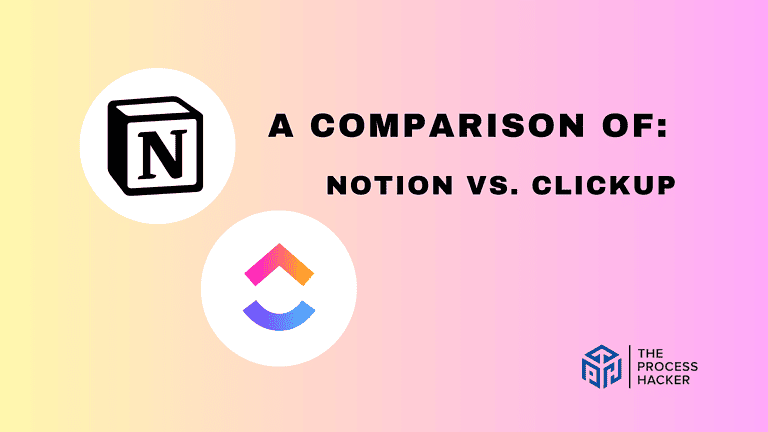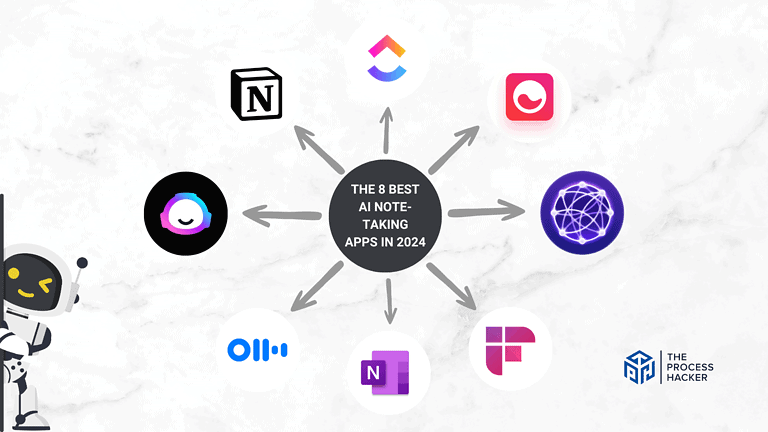How to Make Decisions using the Kepner Tregoe Decision Analysis
Critical decisions tend to be scary, but don’t let your emotions prevent rational decision-making.
Roy T. Bennett is the author of “The Light in the Heart.” He loves sharing positive thoughts and creative insights to help people live more fulfilling lives.
It’s estimated that the average adult human makes about 35,000 remotely conscious decisions each day. Every decision we make takes some effort and impacts our lives, with both good and bad consequences.
We are faced with endless choices:
- When should I set the alarm?
- Should I snooze my alarm or get up?
- What outfit should I wear today?
- What should I eat for breakfast?
Most of the decisions we make every day have trivial solutions and consequences. However, sometimes, we are faced with choices that are based on many competing factors.
We can agonize over the different possible answers, as these decisions can significantly impact our lives, businesses, or vacations.
What is the Kepner Tregoe Decision Analysis?
It’s a structured methodology, developed by Charles Kepner and Benjamin Tregoe, that guides you through a structured process for making complex decisions. It’s not about magic formulas or gut feelings. Instead, it relies on logic, data, and a step-by-step approach to help you:
- Clearly define your goal: What are you trying to achieve?
- Identify your must-haves: What are the non-negotiables?
- Explore your options: What are the different paths you can take?
- Weigh the pros and cons: What are the risks and rewards of each option?
- Make an informed choice: Choose the option that best fits your goals and constraints.
Think of the KT Decision Analysis as your personal roadmap for navigating the decision-making process. It’s a tool that can help you make smarter, more confident choices, whether you’re in the boardroom or your living room.
Why Should You Use Kepner Tregoe for Structured Decision Making?
You may wonder why you should bother with a structured decision-making process like Kepner Tregoe. After all, you’ve been making decisions your whole life, right?
But here’s the thing: the KT Decision Analysis isn’t about reinventing the wheel. It’s about giving you a proven framework to tackle those tough choices that leave you feeling stuck or uncertain.
Here’s what KT can do for you:
- Reduce stress and overwhelm: Decision-making can be emotionally draining. KT helps you break down complex problems into manageable pieces, making the process less daunting.
- Improve decision quality: By systematically evaluating all your options, you’re more likely to make a choice that aligns with your goals and values.
- Gain confidence in your choices: KT gives you a clear rationale for your decision so you can feel good about the path you’ve chosen.
- Save time and resources: A well-structured decision-making process can help you avoid costly mistakes and wasted effort.
Whether you’re a seasoned executive or simply want to make better choices in your personal life, the Kepner Tregoe method offers a practical and effective way to approach decision-making. It’s a tool that can empower you to take charge and steer your life in the direction you want it to go.
How to Use Kepner Tregoe for Making Decisions

Below, the post will walk through the step-by-step, systematic Kepner Tregoe Decision Analysis.
#1) Define the Purpose of Making the Decision
State the Decision
First, you have to state the decision that has to be made that would solve your problem in one to a few sentences. This purpose statement should be simple and include the desired result and the action required.
Ask Yourself:
- What is the fundamental problem you are going to solve?
Example: Booking a Hotel for our Vacation
We need to book a hotel in Ocean City for our weekend beach vacation.
Develop Objectives for Making the Decision
Next, you must develop specific, measurable objectives that support the decision’s purpose. These objectives can be categorized into strategic requirements (need-to-haves), operational objectives (want-to-haves), and constraints (Limits in the system).
Ask Yourself
- What are the objectives that help you make the decision?
- Are the objectives necessary, practical, and measurable (with Limits)?
Example: Hotel Objectives
We should think about the objectives that our hotel needs to meet, including identifying the Needs, Wants, and Limits:
Classify the Objectives into Needs and Wants
Strategic Requirements (Needs):
- Must have a gym because we treat our bodies like a temple
Operational Objectives (Wants):
- Low Cost: Minimize how much we will spend per night
- High Rating: Maximize staying at a hotel with an excellent rating
- Close to the Beach: Minimize the distance (miles) between the hotel and the beach
- Close to the Boardwalk: Minimize the distance (blocks) between the hotel and the main boardwalk
Constraints (Limits):
- Limiting research to hotels within a 5-mile radius of the city of interest
- Limiting budget to no more than $400 per night for a two-night stay
Weigh the Wants
Next, you have to weigh the operational objectives in order from the most important Want to the least important Want. Assign the weight of the most important Want (10), and designate the weight of the other Wants in relation to it.
Ask Yourself:
- What is the relative importance of each Want?
Example: Assign Weights to the Hotel Wants
We rank the order of the Wants and assign Weights to each Want:
| Rank | Want | Weight |
| 1 | High Rating | 10 |
| 2 | Close to Beach | 8 |
| 3 | Low Cost | 5 |
| 4 | Close to Boardwalk | 3 |
#2) Evaluate Possible Options

Generate a List of Options
Then, you have to create or identify a list of options that would help you make your decision using your knowledge, experience, or judgment. If you need help generating options, you can look to the objectives, collaborators, experts, the internet, or other resources.
Ask Yourself:
- What are the possible options available?
Example: List of Hotel Options
We create a list of hotel options from the data we find on Hotels.com:
| Hotel Options | Rating | Beach Distance (blocks) | Cost (USD) | Board Walk Distance (miles) | Gym |
| Hotel A | 7.8 | 1 | $295 | 5.4 | X |
| Hotel B | 7 | 1 | $229 | 0.1 | |
| Hotel C | 8.8 | 2 | $330 | 0.3 | X |
| Hotel D | 7.4 | 2 | $232 | 0.4 | X |
| Hotel E | 9.6 | 3 | $379 | 3.1 | X |
Evaluate Options using Needs
You have to evaluate whether each option meets the strategic requirements and remove the options that fail any of the Needs criteria.
Ask Yourself:
- Which options can be eliminated based on not satisfying the Needs?
Example: Eliminate Options without a Gym
We ran through our list of options and eliminated Hotel B because we need a gym:
| Hotel Options | Rating | Beach Distance (blocks) | Cost (USD) | Board Walk Distance (miles) | Gym |
| Hotel A | 7.8 | 1 | $295 | 5.4 | X |
| Hotel B | 7 | 1 | $229 | 0.1 | |
| Hotel C | 8.8 | 2 | $330 | 0.3 | X |
| Hotel D | 7.4 | 2 | $232 | 0.4 | X |
| Hotel E | 9.6 | 3 | $379 | 3.1 | X |
Evaluate Options using Wants
Now, you can compare options against the Wants criteria. First, assign a satisfaction value to the best choice in each Want category as 10 and the worst option as 0. Based on the relative satisfaction of the possibilities, assign values to all other options in relation to it.
Afterward, you can calculate the aggregated satisfaction score for each option. First, for each option, you multiply the Want weights by the corresponding satisfaction values. Then, you sum up the resulting values for each option.
Ask Yourself:
- Which option best satisfies each Want objective?
- How well do other options perform against each Want objective?
Example: Evaluate the Hotel Options
We convert the data values into relative values from the worst choice (0) to the best choice (10). Hotel A is closest to the beach and furthest from the boardwalk. Options C and D are closest to the boardwalk. Also, Hotel D has the worst rating and the lowest cost. Hotel E has the best rating but the highest cost and is the farthest from the beach.
| Hotel Options | Rating | Beach Distance (blocks) | Cost (USD) | Board Walk Distance (miles) |
| Hotel A | 2 | 10 | 6 | 0 |
| Hotel C | 6 | 5 | 3 | 10 |
| Hotel D | 0 | 5 | 10 | 10 |
| Hotel E | 10 | 0 | 0 | 5 |
We multiply the weights by the values and sum them up to get a score based on our criteria, which shows that Option C has the highest score at 145 and Hotel E has the lowest score of 115.
| Hotel Options | Rating | Beach Distance (blocks) | Cost (USD) | Board Walk Distance (miles) | Sum |
| Weight | 10 | 8 | 5 | 3 | |
| Hotel A | 20 | 80 | 30 | 0 | 130 |
| Hotel C | 60 | 40 | 15 | 30 | 145 |
| Hotel D | 0 | 40 | 50 | 30 | 120 |
| Hotel E | 100 | 0 | 0 | 15 | 115 |
#3) Assess Risks
Identify Risks
Before picking an option, you have to identify the risks for the options that scored the best from the Kepner Tregoe Decision Analysis assessment. Each option will have short-term and long-term risks that may result in adverse consequences with a probability of occurrence.
Risk can be defined as follows:
Risk = Probability x Consequence
- Risk – the possibility that something unpleasant or unwelcome will happen.
- Probability – the likelihood of something happening or being the case.
- Consequence – a result or effect of an action or condition.
We can identify risks as if-then scenarios, such that for each risk, if a particular decision was made or an event were to happen, then there are corresponding consequences for that event.
Ask Yourself:
- What are the short-term and long-term risks for each option?
- Can you frame the risks as if-then scenarios?
Example: Identify Risks for Option C
First, we will identify possible risks for Hotel C:
- Cancellation: If we cancel, then Option C has an unfavorable cancelation policy of a 50% refund.
- Lack of Sleep: If we are taken close to the boardwalk, then it may get very loud outside, and we will not be able to sleep.
- Laziness: If we are too lazy to leave our hotel for meals, then we may pay a lot of money to eat at the hotel restaurant.
Evaluate Risks
To quantify risks, you have to establish values for the probabilities and consequences. You can either assign a percentage or a relative value (High, Medium, or Low, which can be refined using +/-) to each factor. The risks can then be calculated as the product of the probability and consequence.
Ask Yourself:
- What is the quantified risk for each option, evaluating the probability and the consequence of occurrence?
Example: Evaluate Risks for Option C
Based on the results of the Kepner Tregoe decision-making assessment, we will evaluate the risks for Hotel C first:
| Possible Risks | Probability | Consequence | Risk Score |
| Cancellation | 25% (Low) | 50 (Medium) | 12.5 (Low-) |
| Lack of Sleep | 75% (High) | 50% (Medium) | 37.5 (Medium-) |
| Laziness | 33% (Low+) | 75% (High) | 25% (Low) |
We would typically have conducted a risk assessment for Hotel A as the second-best score, but we decided it was unnecessary for the purposes of this example.
#4) Make the Decision
Let’s make a decision. Pick the option that best meets the criteria with acceptable risks. For the decided option, consider the risks and establish a plan of action to minimize the likelihood of occurrence or the adverse consequences.
Although the Kepner Tregoe Decision Analysis methodology can seem unbiased, bias is inherent to the process of assigning values. Someone has to assign relative values to the Want objectives and option satisfaction values in relation to one another. Additionally, someone has to decide on the risks of choosing a particular option, which can vary depending on the corresponding probabilities and consequences.
Here’s how integrating situation appraisal, problem analysis, and decision statement can sharpen critical thinking skills and enhance problem-solving effectiveness. By recognizing both conscious and unconscious biases, decision-makers can refine their approach to ensure minimal negative consequences and adhere to rational processes in their decision-making strategy.
Ask Yourself:
- Are you willing to accept the risks to benefit from this option?
- How can we minimize the risks for the option selected?
Example: Make a Decision to Stay at Option C
Based on the Kepner Tregoe Decision Analysis results and acceptable risks, we will book our vacation at Hotel C.
Key Considerations For Your Systematic Approach
While the Kepner Tregoe Decision Analysis provides a solid framework, it’s important to remember that it’s not a one-size-fits-all solution. The success of your decision ultimately depends on how well you tailor the process to your specific situation.
Before diving into the steps, take a moment to reflect on the core purpose of your decision.
- What is the fundamental purpose of this decision?
- What objectives should be considered? Which are MUSTS and WANTS?
- What alternatives should be considered?
- What risks are presented by the best-performing alternative(s)?
- What is the best choice with manageable risk?
Final Thoughts on Kepner Tregoe Decision Analysis
And there you have it! The ultimate guide to making decisions using the robust Kepner Tregoe Decision Analysis.
We hope this blog post has helped illuminate the daunting task of decision-making and provided you with a clear and actionable process to follow. Remember, decision-making doesn’t have to be a shot in the dark or a game of chance.
With the Kepner Tregoe Decision Analysis, you can approach every decision with confidence and assurance, knowing that you have carefully considered all possibilities and weighed them against each other.
So go forth and conquer your decisions, big or small!







